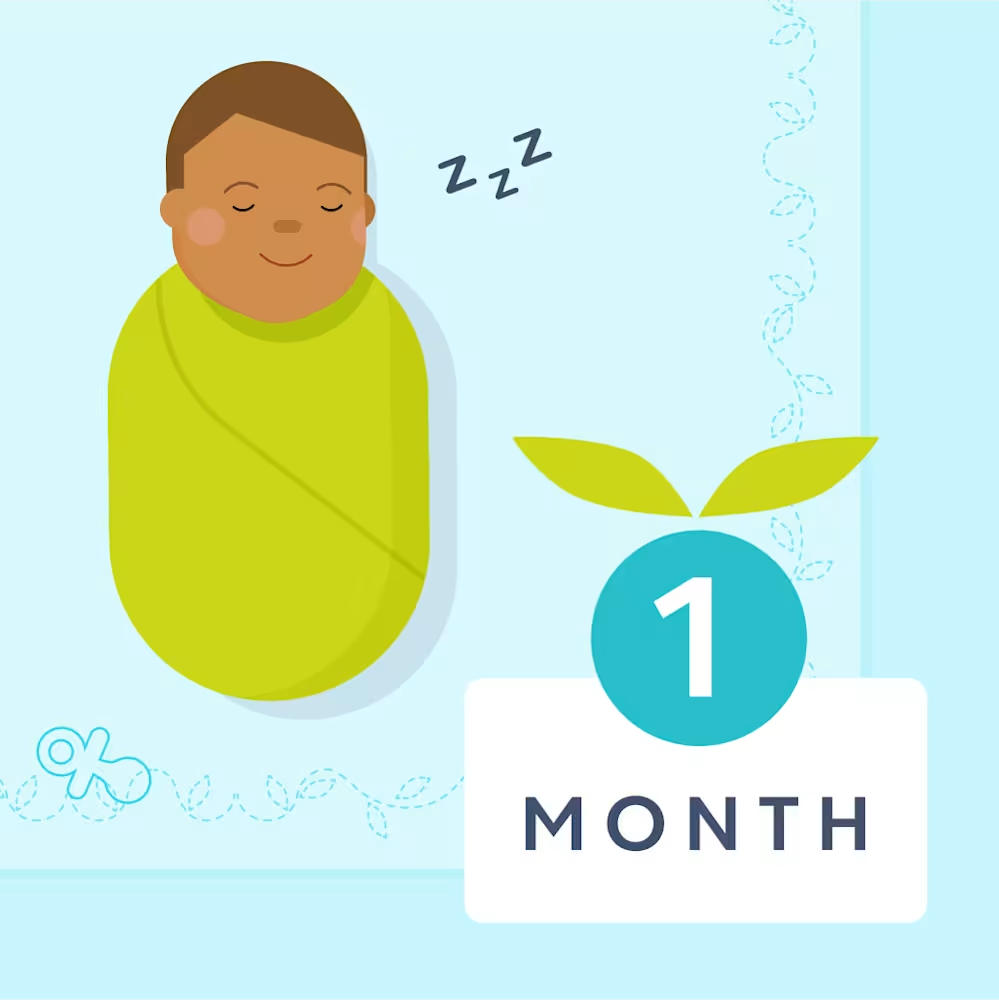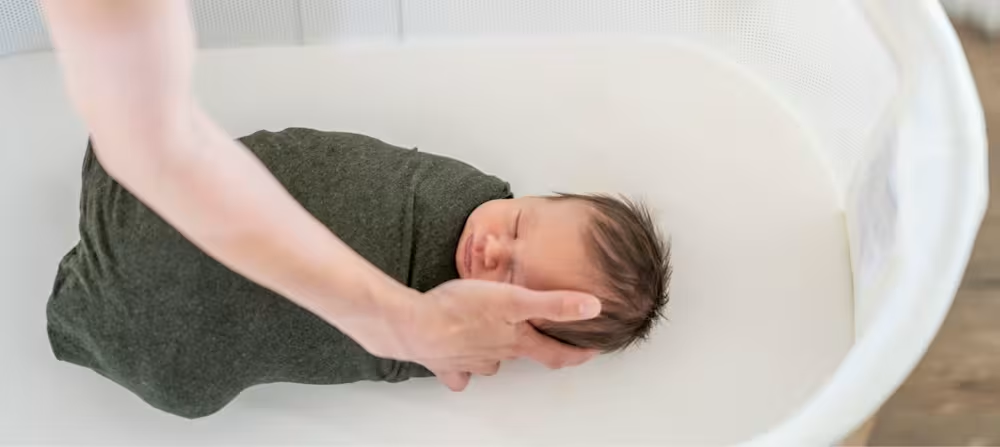7 newborn worries you don’t need to lose sleep over
Updated Oct 17, 2025

It’s Monday morning, and I'm going to my office early to get some work done before my patients arrive. I run up the stairs, swing the door open and when I step out into the hallway, I find Melanie standing there. Melanie is a new mom with a sweet one-month-old baby. “Is everything okay?” I ask.
I’m sorry Dr. Cathryn but I was awake all night worrying about Charley’s legs, so I thought I’d come and take my chances.
It turns out that Melanie just noticed how bowed her baby’s legs are and she couldn’t think of anything else all night. She googled ‘bowlegs’ and it only made things worse. She hadn’t slept a wink even though Charley was sleeping well.
Caring for a new baby is such an exciting, overwhelming, confusing, joyous, and time. The first few weeks can be particularly challenging (, anyone?). All of a sudden you’re totally responsible for another human being—and you may not have any previous experience with babies or any friends or family nearby to guide you.
Many new parents feel hesitant about calling their doctor and wonder whether they’re overreacting. My goal is to spare you from losing any extra sleep and to make the beginning of your journey an easier one. So, I’ve put together some answers to common new baby concerns to ease your mind which will hopefully allow you to sleep when your little one does.
Blocked tear duct
Within the first days or weeks of life, some babies will have a sticky eye (or two). This is very common, in fact, over 5% of infants have a blocked tear duct —and 90% will clear spontaneously during the first year of life. A blocked tear duct implies a partial or complete obstruction in the tear-draining system.
When there’s an obstruction, tears can’t drain and therefore they spill over causing a watery and teary eye. Plus. discharge from the corner of the eye also occurs but the white of the eye remains unchanged. This typically becomes apparent within the first few weeks of life.
Many parents worry that this will somehow hurt a baby’s vision or that antibiotics are required. However, a blocked tear duct typically resolves on its own by 1 year of age. Discharge can occur from the eye for other reasons, so it's best to discuss this with your healthcare provider.
Congenital dermal melanocytosis
Congenital dermal melanocytosis is the medical term for bruise-like markings that are part of a common type of birthmark. The spots are very common in Asian, Hispanic, and African Americans and occasionally Caucasians.
In 1885, an anthropologist called these markings "Mongolian spots" because he incorrectly thought they were more prevalent amongst his Mongolian patients. The medical community has steered away from this term due to it being offensive and outdated.
These birthmarks are blue to grey and appear on the trunk, especially lower back, buttocks, and thighs. They are generally present at birth or shortly thereafter — and they are harmless, requiring no treatment or monitoring. Most, but not all, fade away with time.
I’ve had families accused of spanking their baby because the birthmarks were confused for bruising. I recommend taking pictures of your baby's unique birthmarks to avoid possible future embarrassment.
Bowlegs
Babies are born bowlegged because of the curled-up position they assume in the womb. This is called genu varum. You’ll see the bowing occurs below the knee. This typically resolves after a child starts walking. Chat with your doctor if you’re worried, or if the bowing is severe, unequal or persists once your baby is walking.
Jaundice
Yellowing of the skin and eyes is very common in the first few days of a new baby’s life. For most babies, jaundice will go away on its own. However, some new babies will require treatment in the hospital.
You should see your baby’s healthcare provider if your little one appears more jaundiced or feedings aren’t going well. Also, watch for signs of dehydration, such as fewer wet diapers, or urates in the diaper. (Urates are a red-orange stain found in your baby’s diaper that may be caused by dehydration).
Spitting up
Many babies spit up. But it’s important to be able to differentiate between vomit and spit-up because vomiting needs a trip to the hospital, while spit-up can be reviewed with your doctor. How can you tell the difference?
Spit-up effortlessly spills out of the mouth, is typically a small amount, and sometimes comes up with a burp. While vomiting is more forceful and is a larger amount. If your baby’s vomit is consistently forceful or dark green in color or spit-up is copious, you should take your little guy to the hospital. If you’re not sure whether your baby is spitting-up or vomiting, err on the side of safety, and have your baby seen by a doctor.
Ins & outs
Since your baby can’t tell you how she’s feeling, you’ll partly need to depend on wet and poopy diapers to guide you about her hydration and nutrition.
Urine output — In the early days, a baby typically has one wet diaper for each day of life. In other words, 1 wet diaper on day one, 2 on day two, and so on... Once your milk comes in, you can expect approximately 5 - 6 wet diapers in a day.
Poopy diapers
Newborn poop comes in a variety of colors and consistency. Pooping is also a reflection of your baby’s well-being. First comes meconium, the black tarry stool that filled your baby’s intestine when in utero. Next comes a transitional stool, which is a dark green, yellow, yellow-green, loose, and possibly seedy stool. Then within a few days comes a mustard-like color, watery, or seedy stool for breastfed babies. A bottle-fed baby’s poop can have a more brownish-colored stool that is soft but formed.
So here’s the deal. There’s a lot of variation of normal newborn poop! So, what’s the average? In the first few weeks of life, a breastfed baby may have 1 - 10 bowel movements per day with the average being 5. A bottle-fed baby will typically have 2 bowel movements a day, but this number may also vary.
When should you contact your physician regarding your baby’s Ins & Outs in the first month of life? (It’s important to realize we are talking about the first month of life—as your baby’s digestive system is changing quickly and what’s considered normal will change after this time).
Call your doctor if:
1. your baby has urates in several diapers
2. your little one isn’t having adequate urine output
3. your newborn isn’t having a daily BM in the first few weeks of life.
4. stools are white or light-colored stool (especially if your baby is jaundiced, as this may reflect liver problems)
Other reasons to see your doctor would include non-stop crying, feeding problems, lethargy and sleeping more than usual, breathing rapidly, fever, and anything that makes you feel worried.
Finally, if anything about your baby’s condition is making you feel uncomfortable, please see your healthcare provider. Trust your instincts—they’re typically right!
Follow Dr. Cathryn on instagram at for expert advice on your Baby's first years.


Share article:
Note: The content on this site is for informational purposes only and should not replace medical advice from your doctor, pediatrician, or medical professional. If you have questions or concerns, you should contact a medical professional.
Share article:








